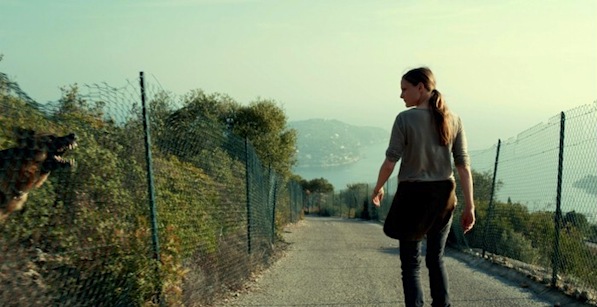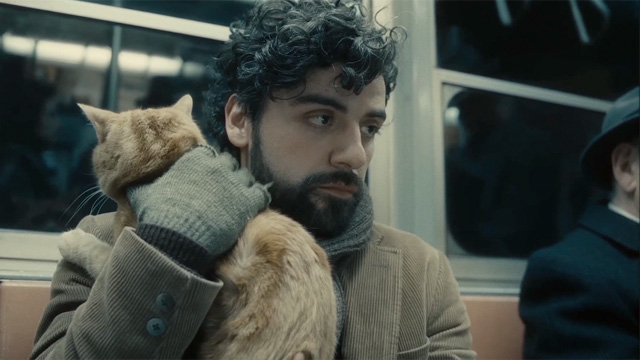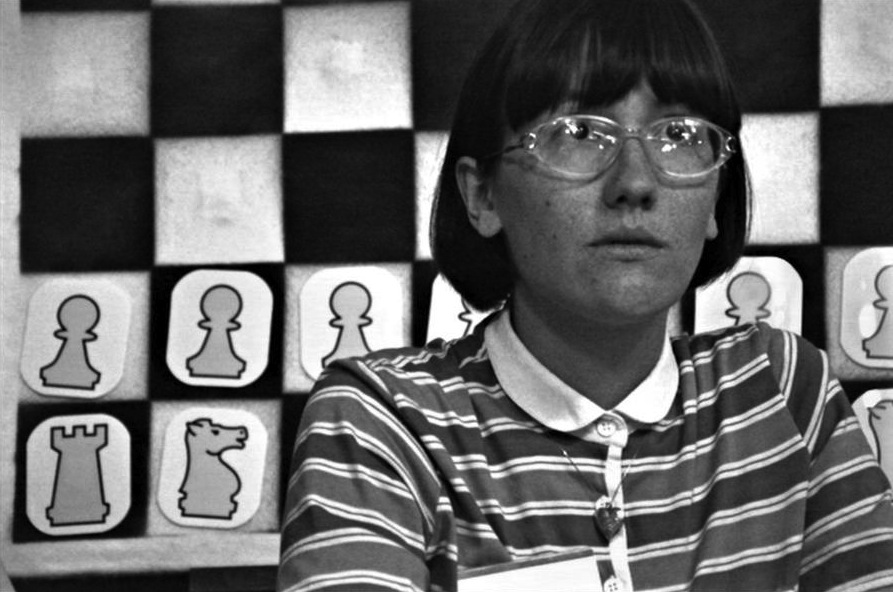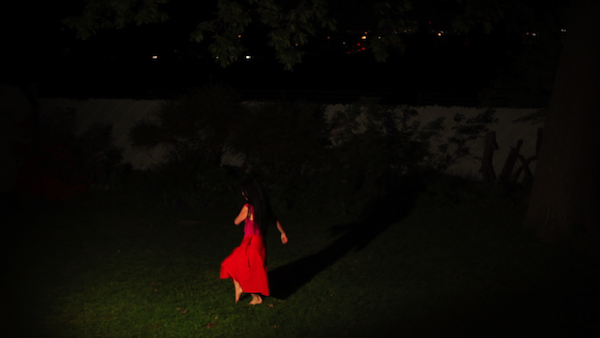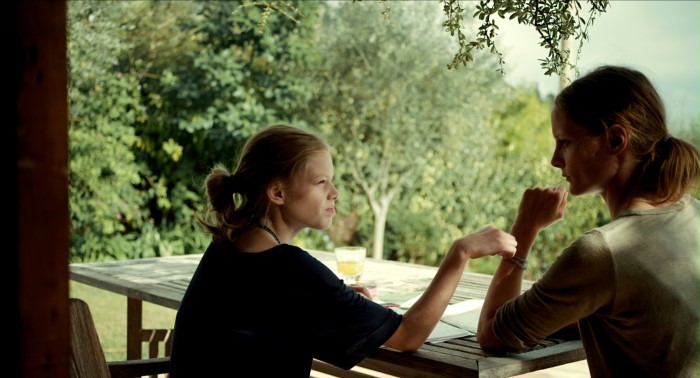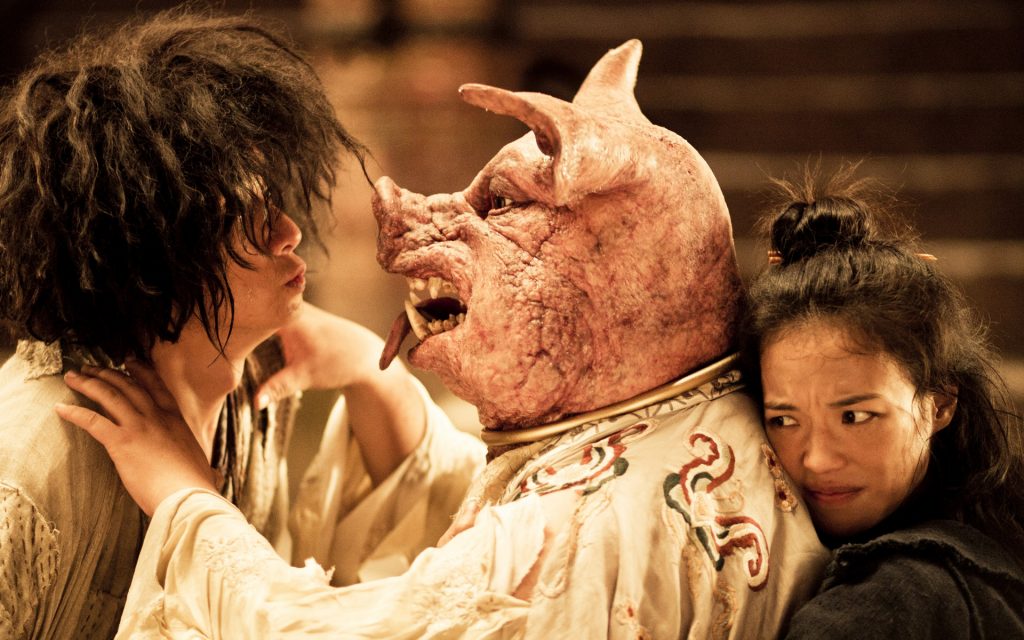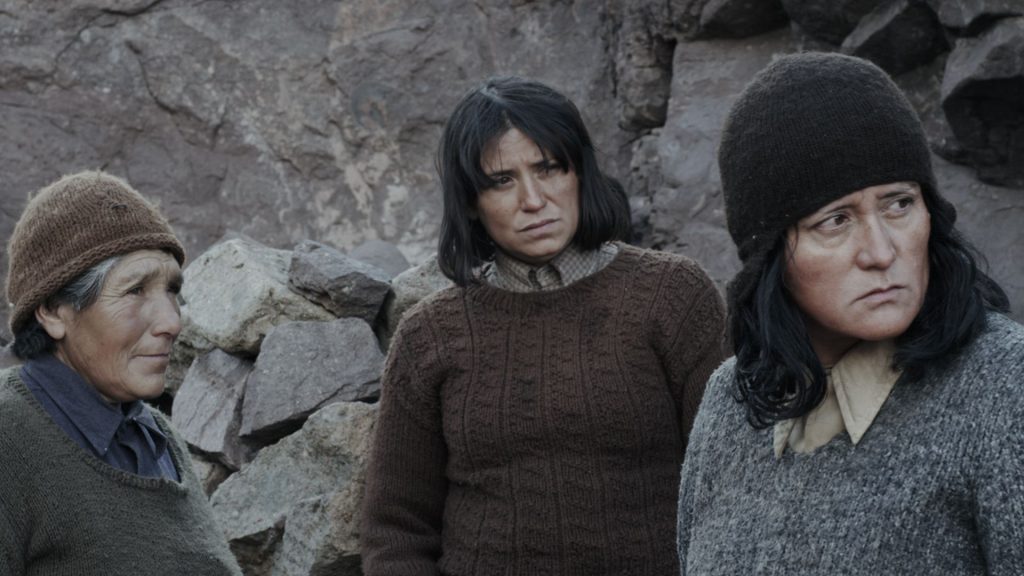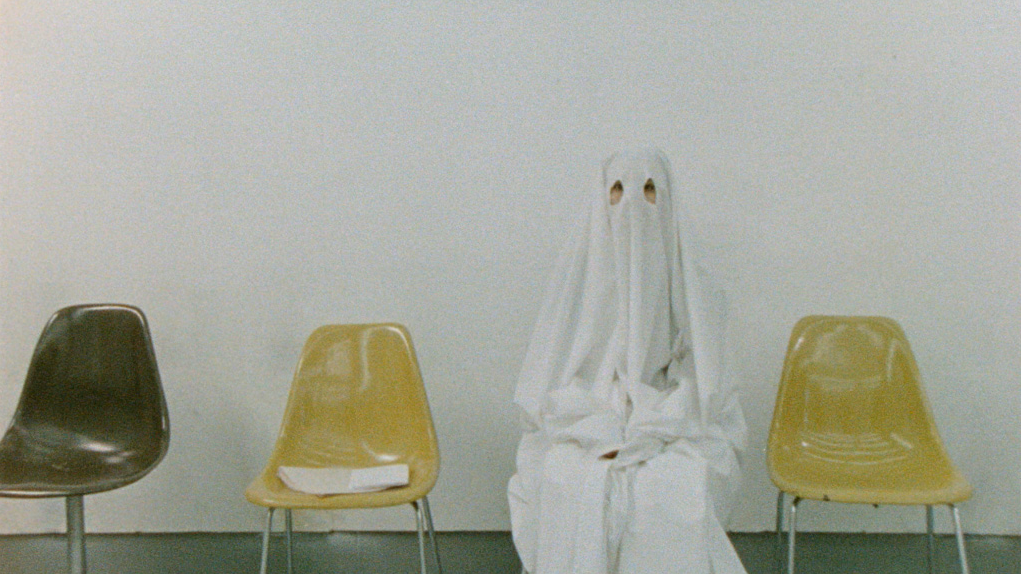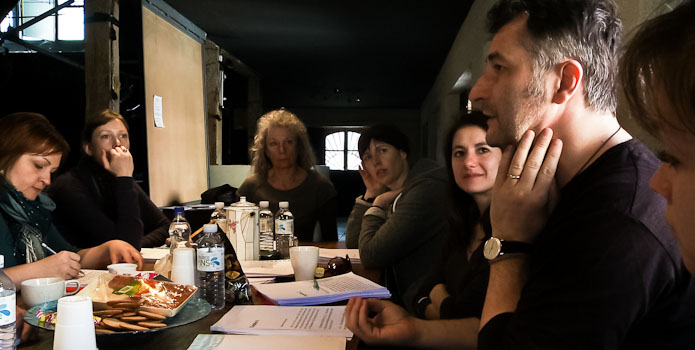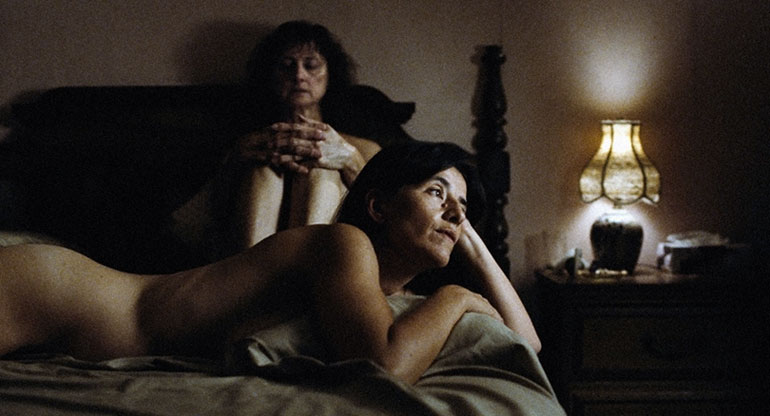The Year in Film 2013? I’m not done yet. Sorry, but I’m still way behind; I didn’t get to attend any film festivals this year, and as far as actually leaving my home to see a movie in an actual theater, that rarely happens unless there is a fairy princess or a Smurf involved. I realize this may smack of laziness, but unfortunately I work a second full-time job (university teaching), and I can’t always manage to slip my screeners onto the syllabus. I will say that at this point, I’m rather glad that a whole host of the year’s films remain ahead of me. So far, I haven’t been exactly thrilled with much of 2013’s cinematic output.
There have been a few very pleasant surprises. I did not expect Inside Llewyn Davis to have such deep resonances regarding the question of artistic integrity and epochal change. It’s much more than a finely wrought character study, although it is indeed that as well. The Coens have been going from strength to strength since No Country For Old Men, with the minor exception of True Grit, which struck me as overly besotted with Jeff Bridges’ Method dissolution.
I was also gratified that, at long last, I could fully embrace a film by Andrew Bujalski, one of America’s most talented younger directors. While I found some of his previous films too insular and affected to fully access, Bujalski reached a new creative high ground with Computer Chess, a formally daring and intellectually complex period piece. By revisiting the early 1980s, Bujalski shows us a pivotal moment in the history of technology, and by extension, the development of our contemporary consciousness.
And, like Bujalski, the French iconoclast Alain Guiraudie achieved a new level of achievement and clarity of purpose with his plein air thriller Stranger by the Lake. While retaining some of the Surrealist touches of his previous work, Guiraudie was nevertheless able to strip his bachelors bare, displaying a gay cruising community walking the razor’s edge between eroticism and mortal danger. Scheduled to be released early next year, Stranger is sure to raise eyebrows, and temperatures, with its explicit, unsimulated sex.
Still, there are a number of the most acclaimed films of 2013 that I found merely okay, or problematic in some fashion. Having said this, I have absolutely no interest in writing one of those smug, heinous columns in which I chide my colleagues for having such pedestrian taste, or worse, list a “better” film for each movie garnering significant praise. (E.g., “Grown Ups 2 is better than A Touch of Sin because….”) If we acknowledge that there is a regrettable dick-measuring element to the year-end list-making game, then articles infused with that brand of negative swagger (be it couched in “snark” or “smarm”) are the absolute nadir of macho one-upmanship.
Instead, I would like to highlight a few films that, while perhaps imperfect, “minor,” or otherwise sub-listworthy, are deserving of much better than they have gotten. A few of them will be on my final Top Ten for the year; others will be “bubbling under;” others still will be nowhere near my final list. But each and every one has stuck with me, through its intellectual merit, its formal beauty, or just its singular oddness. More people should have seen them. More people should be talking about them. I’m certain that many of my colleagues will like several of them even more than I did. Why didn’t they gain more traction?
In alphabetical order, I give you The Slept-On Class of 2013.
Daredevils (Stephanie Barber, U.S.)
Veteran experimentalist Stephanie Barber doesn’t have what we’d call a signature style, but her work is immediately recognizable. Whether she’s working in film or video, with found footage, original performance material, still photographs, or even puppetry, her moving image work is always concerned with the complex processes of language and communication. How do human beings send and receive ideas, and what happens to them in the process? In her first feature film, Barber has created a narrative, kind of, out of the theoretical exploration of these very problems. The first hour of Daredevils consists of a lively, probing discussion between a young writer (KimSu Theiler) and an older artist (Flora Coker). The interview is primarily about the more established woman’s artwork (which, like the rest of Daredevils, is fictional, and therefore purely hypothetical), but it opens onto broader questions of aesthetics, identity, and social engagement. The writer then considers a very different kind of bodily experience while listening to an autobiographical monologue, and finally engages with the work of her composer-housemate (Adam Robinson). Rather than probing artists, art history, or the artmaking process, Barber asks us to think about the energies that thrum beneath and within all of these diverse elements. The result is a film that plays as a sort of flipside to works like Jem Cohen’s Museum Hours or Shane Carruth’s Upstream Color. It is every bit their equal, differently cerebral, and just as spellbinding.
Deep Red (Esther Urlus, The Netherlands)
This short abstract film is the first work I’ve seen by the Dutch filmmaker Urlus, and now I’m a bit embarrassed that she was completely off my radar. Deep Red exhibits a keen interest in the physical properties and textures of celluloid when it’s actually pushed to do more than just “depict.” That is to say, Deep Red bears a superficial resemblance to certain Brakhage or Len Lye works, but Urlus’s approach could hardly be more different. She has taken the same basic material (a high-contrast, hand-held “pass” or two over bare winter trees) and printed it in Technicolor, over and over again. At first we’re given the searing red of the title, then a midnight blue. Next are yellow and baby blue, and other colors soon enter the mix. Eventually, Urlus superimposes the multiple color-prints of the same material, which has several different effects. First, it creates color interaction, both through blending and through stark color “montage” and complementarity. Second, and perhaps more importantly, the play of mobile light-forms against one another, within the sea of overall darkness, generates an active film space, one which rapidly expands and collapses as the two, or three, or more segments of trees and sky play against one another. As Urlus layers more of these filmstrips (she claims to lay them on thirty-six-deep at one point), the image becomes a kind of trembling ball of yarn, and so Deep Red evolves from a sort of Lye-like, forms-in-space graphic architecture to a swirling light-Pollock.
Everyday Objects (Nicolas Wackerbarth, Germany / France)
Wackerbarth, alum of Berlin’s now-famous dffb and an editor at the German film magazine Revolver, is by any meaningful definition a “member” of the Berlin School. One could accurately say that he’s not as well known as his compatriots, but to do so would be rather absurd, since it would entail establishing micro-gradations of relative obscurity. In any case, Wackerbarth released his debut feature in 2013, and like so many of the finest Berlin School efforts, it zeroes in on the small gestures and unique discomforts of a particular family dynamic. In this instance, we meet Merle (Anne Ratte-Polle), a young German woman who arrives at her older boyfriend’s place outside Nice, only to find he isn’t there. Eventually his children show up, but he never does, and so Merle must negotiate her presence in the home with Felix (Leonard Proxauf), sixteen, and Emma (Emma Bading), thirteen. Merle’s sense of frustration and abandonment is carefully articulated with the basic need to mitigate the kids’ suspicion of her, and attend to their fundamental needs, which include arranging a celebration from Emma’s birthday. If there is a reason why Everyday Objects hasn’t been widely screened, apart from a general skepticism toward the Berlin School that still simmers in some quarters, in could be that Wackerbarth and Ratte-Polle play the scenario in the lowest of keys. This is a film about restraint, and how a person sets her own drama aside for the sake of children because that’s what adults are supposed to do.
From One Second to the Next (Werner Herzog, U.S.)
A new documentary by Herzog is typically a cause for celebration. But this one is a bit different. It played no festivals or cinemas; it was released immediately to the Internet and sent to various schools for use in drivers’ ed. classes. This brief piece is a commissioned PSA, paid for by AT&T, and it details the dangers of texting while driving. Even though From One Second lacks Herzog’s trademark–the persistent, questioning voiceover–his presence is felt throughout the short film, both in the line of questions that are asked (in onscreen text), and in the unusual formal touches that no ordinary PSA would ever include (such as the two featured subjects who caused accidents through texting, kneeling at the side of the road in prayer-like repose). Focusing on atonement and forgiveness rather than scare tactics, Herzog’s film is poetic propaganda in the mold of John Grierson. It’s odd that recent commercial work by Wes Anderson, Harmony Korine and David Gordon Green has received so much more attention than this, a truly worthy addition to Herzog’s filmography.
Journey to the West: Conquering the Demons (Stephen Chow / Derek Kwok, China)
Maybe U.S. distributors thought we didn’t know the source material. Or maybe they thought that we wouldn’t go for a Stephen Chow film in which the comic master makes not one single appearance. Whatever the thinking, one of this year’s biggest hits across Asia also happens to be another creative triumph for Chow, a major return to form after his admirable but meandering Spielberg tribute CJ7. While Journey to the West doesn’t achieve the formalist heights of Kung Fu Hustle, it comes quite close, in part because its episodic structure allows for the construction of complex, full-range-of-motion set pieces, from the see-saw masts and piers and flying, flailing bodies involved in the capture of the fish-demon, to the out-of-the-hole and into-the-air antics of the Monkey King (Huang Bo). Although Journey is not in 3D and was never intended to be, Chow and Kwok’s action sequences make full use of the Z-axis, demonstrating that spatial design hardly relies on new technologies to get its point across. As for the story itself, Chow clearly has decided to forego his usual broad, mugging comedy in favor of a shy protagonist (Wen Zhang), a monk whose humble, even incompetent ways eventually win out over the trickery of the demons and the brute force of his demon-hunting competitor / love interest (Shu Qi). As madcap and entertaining as Journey to the West is under Chow’s command, there is an abiding respect for the 16th century novel, one of the pillars of classical Chinese literature.
The Quispe Girls (Sebastián Sepúlveda, Chile / France / Argentina)
A film that premiered this year at the Critics’ Week in Venice and promptly fell off the face of the earth, this fate is strangely apropos, given the dark subject matter of Sepúlveda’s film. What begins as a lovely but somewhat standard-issue rural landscape film, showing three sisters tending their flock of sheep on the Chilean Altiplano. In time, they begin to notice that their neighbors and their livestock are vanishing. These women, who have only just lost their worldlier elder sister, suddenly have to face the unexpected hand of history encroaching upon them. The indigenous population is being forcibly removed by Pinochet’s troops, on the assumption that they may pose a threat from the mountain high ground. The isolation of the sisters, their feeling of disconnection with the outside world, and their longing for a sexual connection that they fear will never materialize, plays out like a tragedy against the political drama in which they are ensnared. They worry that police will kill their animals, but this becomes part of the growing tragedy of their daily lives. The Quispe Girls is a powerful film that, had the title not already been taken, could have justifiably been called All Is Lost.
Salvation Army (Abdellah Taïa, France / Morocco / Switzerland)
A lot of films still get pigeonholed as “gay cinema” on the festival circuit, which often has less to do with the quality or even the sexual content of the films themselves, and more to do with the plethora of film festivals large and small, and the need for niche marketing as a reliable method of getting pairs of eyes in front of movies. While it’s not entirely fair to say that Salvation Army was slept on (it premiered in Venice and played at Toronto), I worry that it may languish without a distributor and eventually get funneled to a specialty DVD label as part of some bulk sale. Taïa’s film is so much better than that–a coming of age story that avoids sentimentality and cliché, working instead to show how a young person and his desires are formed in a social and cultural context. Young Abdellah is almost as devoid of affect as a Bresson protagonist, his affections and his friendship passed along in a manner not unlike the counterfeit bill in L’argent. And once Abdellah grows into a man, living between cultures, his sense of self as an exchange-value only gets more intense, and more heartbreaking.
Service of the Goods (Jean-Paul Kelly, Canada)
This medium-length experimental film began life as an installation, but demands to be seen as a start-to-finish work. It’s a bit of a departure for Kelly, who has used motifs drawn from Minimalist and Suprematist painting in order to create formal works that open onto broader social and political questions. Here, Kelly reverses the polarity, meticulously recreating scenes from a number of classic Frederick Wiseman documentaries. He does this by stripping away the atmospheres, settings, and cloaking his performers in white sheets. So, just as painter Robert Ryman uses only white paint so that we can “study” brushstroke, Kelly “whitewashes” Wiseman, allowing us to see camera movement, blocking, and edits that his direct-cinema style tends to disguise. This film is not only a bang-on piece of filmic analysis; it also poses fundamental questions about the representation of social institutions, and those stuck inside of them.
Three Interpretation Exercises (Cristi Puiu, France / Romania)
Here’s a film that I’ve already discussed at length, right here on Keyframe. I won’t rehash those arguments, but I will note that the strange indifference with which 3IE has been met is perplexing, especially considering the fact that, in contemporary art film circles, Puiu is a bit of a star. This leads me to wonder: is this film being treated as a “one-off” or a minor excursion into unserious exploration, because of its name? (Another problem of interpretation: to me, the ultra-formalist title connotes a stringent seriousness of purpose.) Or perhaps more likely, is Puiu’s latest being ignored because it is a French project, and therefore “inauthentic”? Do our current tastemakers consider it Puiu’s charge to inform us about the grim deprivation and sociopathology of post-socialist Romania, and any other endeavor represents a dereliction of duty? Not sure, but one thing is certain. Cristi Puiu keeps the misery coming, and he is duly rewarded.
Vic + Flo Saw a Bear (Denis Côté, Canada)
Like the Puiu, I have written extensively about this film elsewhere, but I think it bears (ha ha) repeating. This should have been the film that finally broke Côté in the U.S., given the strange fact that his equally odd and marvelous Carcasses and Curling went ignored down south. However, I recently learned that a micro-distributor will be sending Vic + Flo around to select cities in 2014, so perhaps there’s hope. Suffice to say, this is a film about a May-December, post-prison lesbian romance that is disrupted by a mysterious stranger with an axe to grind. And there are no bears. Like the best fairy tales, this one’s grisly and grim(m).
For the complete list of year-end lists on Keyframe, go to The Year in Film: 2013.
For the complete index of the films on these lists, go to 2013 Year in Review: Indexed.

